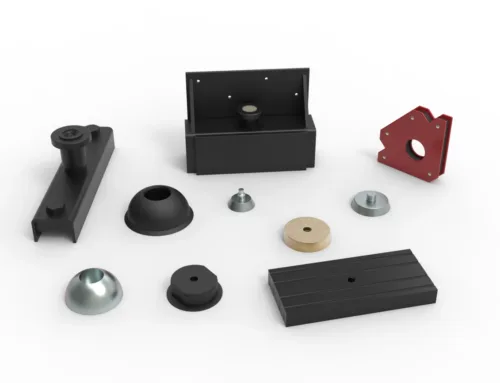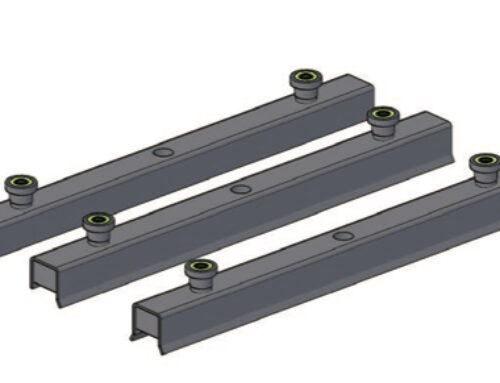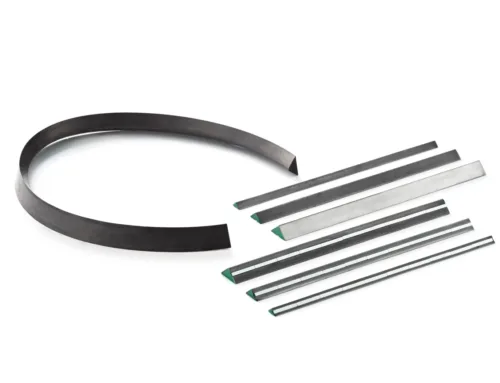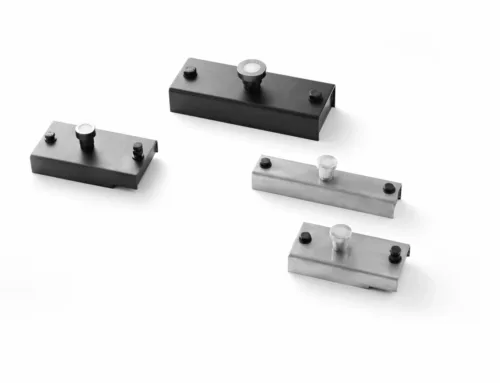Are you curious about what a rare earth magnet is and why it keeps popping up in high-tech devices and industrial applications? If you’ve ever wondered what makes these magnets stand out from regular ones, you’re in the right place. Rare earth magnets are some of the strongest permanent magnets available today, powering everything from electric vehicles to your smartphone’s speakers.
In this post, you’ll get a clear, no-nonsense explanation of rare earth magnets, their types, key properties, and why they’re essential in modern technology. Whether you’re a student, engineer, or just magnet-curious, by the end of this guide you’ll understand why these magnets are game changers — and how NBAEM can help you source the perfect magnet for your project.
Let’s get started!

rare earth
What Exactly Are Rare Earth Magnets
Definition of rare earth magnets
If you’re asking what is a rare earth magnet, the short answer is: a permanent magnet made from alloys that include rare earth elements, most commonly neodymium or samarium. The two dominant types are neodymium-iron-boron (NdFeB) and samarium-cobalt (SmCo). These magnets produce much stronger magnetic fields than conventional permanent magnets of the same size.
What the term rare earth means
“Rare earth” refers to the lanthanide series of elements on the periodic table — elements like neodymium (Nd) and samarium (Sm). Despite the name, these elements aren’t necessarily extremely rare in the earth’s crust; they are just rarely found in concentrated, mineable deposits and require specialized processing. That’s why supply and sourcing matter for magnetic performance and cost.
How they differ from traditional magnets
Rare earth metal magnets stand out compared with older magnet types:
- Strength: NdFeB magnets have the highest energy product (magnetic strength) of common permanent magnets.
- Temperature behavior: SmCo offers better high-temperature stability than NdFeB; ferrite and alnico vary but are generally weaker.
- Corrosion and fragility: NdFeB is strong but more prone to corrosion and can be brittle; coatings and treatments are common. SmCo resists corrosion better.
- Cost and supply: Rare earth magnets are more expensive and supply-sensitive compared with ferrite (ceramic) and alnico magnets.
In short, rare earth magnets deliver much higher strength-to-size ratios than ceramic, ferrite, or alnico options, which is why they’re the go-to choice when compact size and high performance matter.
what is a rare earth magnet Types
Neodymium magnets NdFeB
- Composition: neodymium, iron, boron (NdFeB).
- Why they matter: strongest common permanent magnets — best magnetic strength for size.
- Common grades: N35, N42, N52 (higher number = stronger).
- Typical traits: lightweight, cost‑effective, great for compact designs; can corrode and need coatings (nickel, epoxy).
- Temp range: good at room temp, many grades work to about 80–150°C; high‑temp grades and additives extend that.
- Common uses: speakers, hard drives, small motors, headphones, EV components.
Samarium cobalt SmCo
- Composition: samarium and cobalt.
- Why they matter: very stable at high temperatures and naturally corrosion resistant.
- Typical traits: more brittle and more expensive than NdFeB, but keeps magnetism at higher temps.
- Temp range: often stable up to 250–350°C depending on grade.
- Common uses: aerospace, military, high‑temp sensors, some medical and industrial motors.
Quick comparison NdFeB vs SmCo
- Strength: NdFeB > SmCo (NdFeB gives highest magnetic strength).
- Temperature stability: SmCo > NdFeB (SmCo keeps performance at higher temps).
- Corrosion resistance: SmCo better; NdFeB usually requires coatings.
- Cost: SmCo is pricier; NdFeB is generally cheaper and widely available.
- Use cases: choose NdFeB for size/strength and cost; choose SmCo for high temps, corrosive or demanding environments.
Other rare earth options and variants
- Additives like dysprosium and terbium are mixed into NdFe to boost temperature tolerance and coercivity.
- Bonded (plastic‑mixed) rare earth magnets offer complex shapes and safer handling but lower strength than sintered types.
- Thin‑film and microfabricated rare earth magnets are used in sensors and precision electronics.
- Compared withite and alnico magnets, rare earth metal magnets deliver far higher magnetic strength for the same size, which is why they dominate modern electronics, EVs, and clean tech.
Properties and Characteristics of Rare Earth Magnets
’ll break down the key traits you need know when choosing rare earth metal magnets like neodymium and samarium cobalt.
Magnetic strength and coercivity
- Magnetic strength (Remanence Br) — how strong a magnet is on its own. Measured in tesla (T) or gauss. Neodymium magnets are the strongest common type (neodymium magnet properties often show Br up ~1.2–1.4 T), so you can get high pull force in a tiny package.
- Coercivity (resistance to demagnetization) — how well a magnet resists losing its magnetism from opposing fields or heat. High coercivity matters for motors and sensors where stray fields or reversing loads occur. SmCo typically has higher coercivity than standard NdFeB.
Temperature tolerance
- Heat reduces magnetic strength. I always check the max operating temperature before ordering.
- Typical ranges:
- NdFeB: standard grades ~80°C, special high-temp grades up to ~150–200°C.
- SmCo: more stable at high temps, often usable up to ~250°C or higher.
- Exceeding the limit can cause partial or permanent loss of strength.
Corrosion and demagnetization
- NdFeB contains iron so it corrodes easily if uncoated. Common coatings: Ni-Cu-Ni (nickel), epoxy, zinc, and gold plating. Coatings protect against rust and improve longevity.
-Co is naturally more corrosion resistant and needs less coating. - Mechanical shock, strong opposing fields, or improper storage can demagnet
How Are Rare Earth Magnets Made what is a rare earth magnet
I’ll walk you through the rare earth magnet manufacturing process in plain terms so you know what goes into the magnets used in everything from EV motors to headphones.
Powder production and pressing
- Raw metal ores (usually containing neodymium or samarium) are refined into alloys, then atomized or milled into a fine powder.
- The powder is pressed into a mold while aligned in a magnetic field so the grain orientation improves magnetic strength (this step matters for neodymium magnet properties).
- Pressing can be done isostatically (even pressure) or by die pressing for specific shapes.
Sintering and machining
- Sintering: pressed parts are heated below melting point to bond particles into a dense solid. This produces sintered magnets with very high magnetic strength and good mechanical properties.
- After sintering, parts are machined (grinding, EDM) to tight tolerances. Sintered NdFeB is brittle, so machining needs care.
Sintering vs bonded magnet processes
- Bonded magnets use magnetic powder mixed with a polymer binder, then injection molded or extruded. They’re weaker than sintered but are good for complex shapes and thin sections.
- Quick comparison
| Feature | Sintered Magnets (NdFeB/SmCo) | Bonded Magnets |
|---|---|---|
| Magnetic strength | Very high | Moderate |
| Shape flexibility | Limited (post-machining) | Excellent (complex parts) |
| Cost | Higher per part | Lower for complex/low-strength parts |
| Temperature stability | Good (depends on grade) | Lower |
| Typical uses | Motors, generators, precision devices | Sensors, molded components, consumer products |
Raw material sourcing and quality control
- Most rare earth metal magnets start with ores mined in a few regions worldwide; supply concentration (notably China) affects price and availability.
-urities or inconsistent alloy mix change coercivity and flux—so I always recommend suppliers provide chemical analysis and magnetic specs. - For US buyers, check certificates, batch testing, and traceability to meet procurement and regulatory needs.
Post processing coating magnetizing and testing
- Coatings (nickel, zinc, epoxy) protect neodymium magnets from corrosion; SmCo resists corrosion better but still may get coatings for mechanical wear.
- After final shape and coating, magnets are magnetized in a controlled fixture to reach the specified field strength and polarity.
- Quality checks include:
- Gauss/tesla measurement (flux density)
- Demagnetization curve (BH curve) testing
- Dimensional and coating inspections
- Thermal cycling for temperature-sensitive applications
Common Applications Rare Earth Magnets what is a rare earth magnet
I use rare earth magnets across many projects because their magnetic strength of rare earth magnets lets you shrink parts without losing power’s where they show up in the US market.
Electronics
- Hard drives and precision sensors — strong, compact neodymium magnets enable high data density.
- Microphones and speakers — better sound in smaller packages thanks to neodymium magnet properties.
- Actuators and precision devices in robotics and instrumentation.
Renewable Energy
- Wind turbine generators — rare earth metal magnets boost efficiency and lower weight.
- Electric vehicle (EV) motors and drivetrains — neodymium magnets are common for power-dense, compact motors.
- Power electronics and clean tech components where strength-to-size matters.
Medical Equipment
- MRI components and positioning fixtures (note main MRI magnets are superconducting) — rare earth magnets help in sensors and precision instruments.
- Surgical tools, hearing devices, and lab instruments that need reliable, small magnetic assemblies.
Industrial Applications
- High-efficiency motors, servo actuators, and generators — fewer materials for the same output.
- Magnetic separators, couplings, and clamps used on shop floors and in processing plants.
- Automation and robotics where weight and performance matter.
Consumer Products
- Headphones, earbuds, and portable speakers — compact sound systems use neodymium magnets.
- Magnetic fasteners, closures, toys, and everyday gadgets — strong hold in small sizes.
Quick notes
- For high-temp or corrosive settings consider samarium cobalt magnet uses for better stability.
- If cost or supply is a concern, compare rare earth magnets vs ferrite magnets for lower price and corrosion resistance.
- I recommend checking supplier specs and manufacturing process details before buying, especially when sourcing from rare earth magnet suppliers China
Advantages and Limitations
I use rare earth magnets a lot in designs because of their sheer performance, but they come with tradeoffs. Here’s a clear look at why you might pick them—and what to watch for.
Advantages
- Highest strength-to-size: Neodymium magnetsNdFeB) deliver far more magnetic strength than ferrite or alnico for the same volume, letting you miniaturize motors, sensors, and speakers.
- Better performance for compact designs: Small parts, high torque, or tight tolerances are where rare earth magnets really shine.
- Good coercivity and remanence: They hold magnetization well, which means reliable long-term performance in many electronic and industrial uses.
- Specialized grades and options: can choose high-temperature SmCo for heat stability or different NdFeB grades for max strength or cost balance.
Limitations
- Cost and price volatility: Rare earth magnet prices can swing with raw material markets and global demand. For US buyers, expect variable quotes and planning lead times.
- Supply concentration: Much of the rare earth processing is concentrated overseas, which can affect lead and logistics. Working with a reliable supplier helps—consider a partner like NBAEM your best neodymium magnet supplier for steady supply and support.
- Corrosion and fragility: Some grades (especially uncoated NdFeB) need protective plating or epoxy; they’re also more brittle ferrite and can chip if mishandled.
- Temperature limits: Neodymium strength at elevated temps; SmCo is better for high-temp use but costs more.
Environmental and sustainability concerns
- Mining impacts: Rare earth extraction has localized environmental costs—water use, waste, and land disturbance matter to communities and buyers.
- Recycling challenges: Recover rare earths from magnets is possible but complex and not yet widespread in the US. That makes end-of-life planning important for larger projects.
- Alternatives and tradeoffs: For cost or sustainability reasons, bonded magnets or ferrite magnets can be viable alternatives. Check bonded magnet options and specs to see if they meet your design needs.
If you’re balancing performance, budget, and supply for a US project, I recommend specifying required grade, max operating temperature, and corrosion protection up front—and working with suppliers who provide clear lead times and quality data.
How to Choose the Right Rare Earth Magnet for Your Needs what is a rare earth magnet
I help a lot of US customers pick magnets every week. Here’s a plain guide to the most important things to check and how to match magnets to common uses.
Key factors to consider
- Magnetic strength and grade
- Look at Br (remanence) and BHmax; higher values mean a stronger magnet for its size. This covers neodymium magnet properties and overall magnetic strength of rare earth magnets.
- Coercivity and demagnetization resistance
- High coercivity (Hci/Hcb) matters if the magnet will face high fields or shock. Samarium cobalt magnets often win here.
- Maximum operating temperature
- NdFeB loses strength above ~80–150°C depending on grade; SmCo works up to 300°C+. Pick based on your operating temp.
- Size, shape, and magnetization direction
- Thin discs, blocks, rings, or custom shapes change the field. Tolerances affect fit and performance.
- Coating and corrosion protection
- NiCuNi, epoxy, zinc, or parylene prevent rust on NdFeB. Ask for coating specs if it’s for outdoor or humid US environments.
- Mechanical and manufacturing limits
- Sintered magnets are brittle. Bonded magnets are tougher but weaker. Consider machining and assembly needs.
- Supply chain and certifications
- Ask for material certificates, RoHS/REACH, and batch test reports, especially when sourcing from
Where to Buy Rare Earth Magnets what is a rare earth magnet
Why choose NBAEM
We supply rare earth metal magnets from China with a focus on U.S. buyers who need reliable parts, clear specs, and fast answers. As a factory-backed supplier we handle, production, inspection, and export — so you get consistent neodymium magnet properties and samarium cobalt options without middleman uncertainty. Learn more about our company on NBAEM your best neodymium magnet supplier from China.
Credentials and export readiness
- Factory manufacturing with export experience to the U.S. market
- In-house tooling and prototyping for custom shapes and bonded vs sintered magnets
- English-speaking technical support to help with U.S standards and application questions
Quality assurance and certifications
Expect documented quality checks and test reports:
- Material certificates and chemical composition checks
- Magnetic testing (Gauss, BH curves) and dimensional inspection
- Common certifications: ISO quality systems, RoHS and REACH compliance where required
We also offer guidance on corrosion protection and coatings to match your operating environment. See our notes on the quality neodymium magnets for more detail.
Competitive pricing and supply chain reliability
We balance price and lead time for U.S. buyers:
- Typical lead times: prototype samples in days to weeks, production runs in weeks depending on volume and magnet grade
- MOQ: flexible for many parts — quote low-volume runs for R&D and scaled pricing for production
- Shipping: air, sea and express courier options; export-grade packaging to prevent damage and demagnetization in transit
Customer service and technical support
We work with product engineers and purchasing teams to pick right magnet:
- Application advice on magnetic strength, coercivity, and max operating temperature
- Help with magnetization direction, coatings, and assembly concerns
- Post-sale support: replacement, warranty handling, and troubleshooting
Case studies and references
We share real application examples and past problem solves on request — from magnetic lifter solutions to speaker and motor components. For industrial lifting examples check our magnetic lifters page. If you need references or sample test data, ask us and we’ll provide what you need to validate performance before you buy.





[…] learn more about the basics of magnets and magnetic poles, check out what is a rare-earth magnet and what are magnetic […]